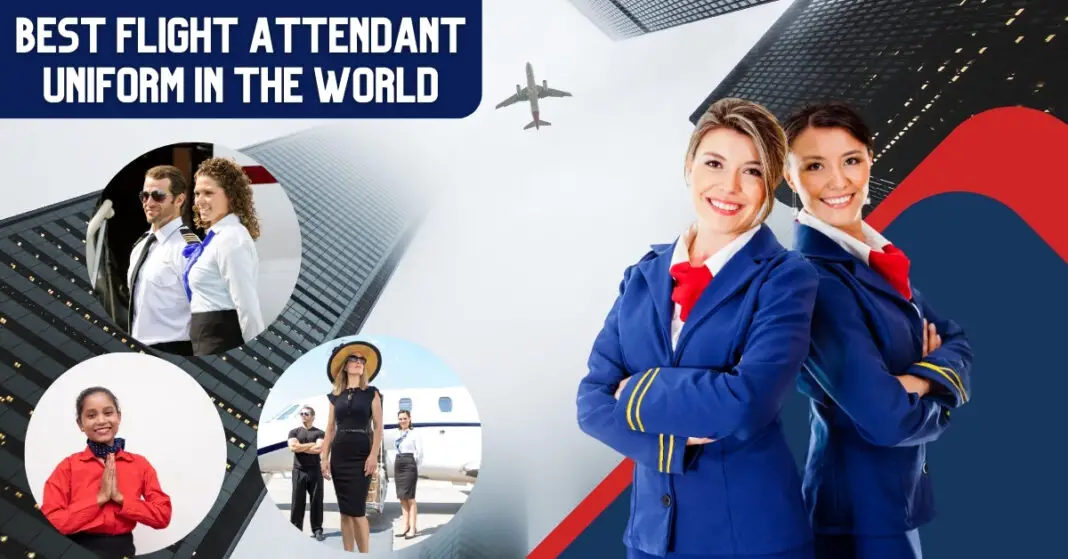Have you ever noticed how flight attendant uniforms catch your eye as soon as you step onto a plane? These uniforms are more than just clothing; they are a crucial part of an airline’s identity and play a significant role in creating a first impression.
From stylish designs to practical features, flight attendant uniforms blend aesthetics with functionality to meet the demands of their unique workplace.
In this blog, we will explore some of the best flight attendant uniforms in the world.
We’ll look at what makes a uniform exceptional, including its style, comfort, and practicality. We’ll also consider how these uniforms reflect the airline’s brand and cultural identity.
Table of Contents
Criteria for the Best Uniforms
Style and Aesthetics
The style and aesthetics of a flight attendant uniform are the first things passengers notice. A well-designed uniform should be visually appealing and align with the airline’s brand image.
Elements such as color schemes, patterns, and overall design play a crucial role. For example, bold colors can make a uniform stand out, while subtle tones might convey elegance and sophistication.
The design should be modern yet timeless, ensuring that it remains attractive over the years.
Comfort and Practicality
Comfort is paramount for flight attendants, who often work long hours and need to move easily in their uniforms.
The fabric choice is critical—breathable, lightweight, and durable materials ensure that the uniform remains comfortable throughout the flight.
Practicality is equally important; uniforms should include functional elements like ample pockets, adjustable fits, and designs that allow for a wide range of movement.
These features help flight attendants perform their duties efficiently while maintaining a professional appearance.
Brand Identity
A flight attendant’s uniform is a key component of an airline’s brand identity. It should reflect the airline’s values, culture, and image.
For instance, an airline that prides itself on luxury and elegance might opt for sophisticated, high-fashion designs.
Conversely, an airline known for its youthful and energetic vibe might choose bold, trendy uniforms.
The cultural significance of a uniform can also enhance brand identity, incorporating traditional elements that resonate with the airline’s home country or target market.
By considering style and aesthetics, comfort and practicality, and brand identity, airlines can create uniforms that not only look great but also serve as effective tools for their marketing and operational needs.
Top Flight Attendant Uniforms
Emirates
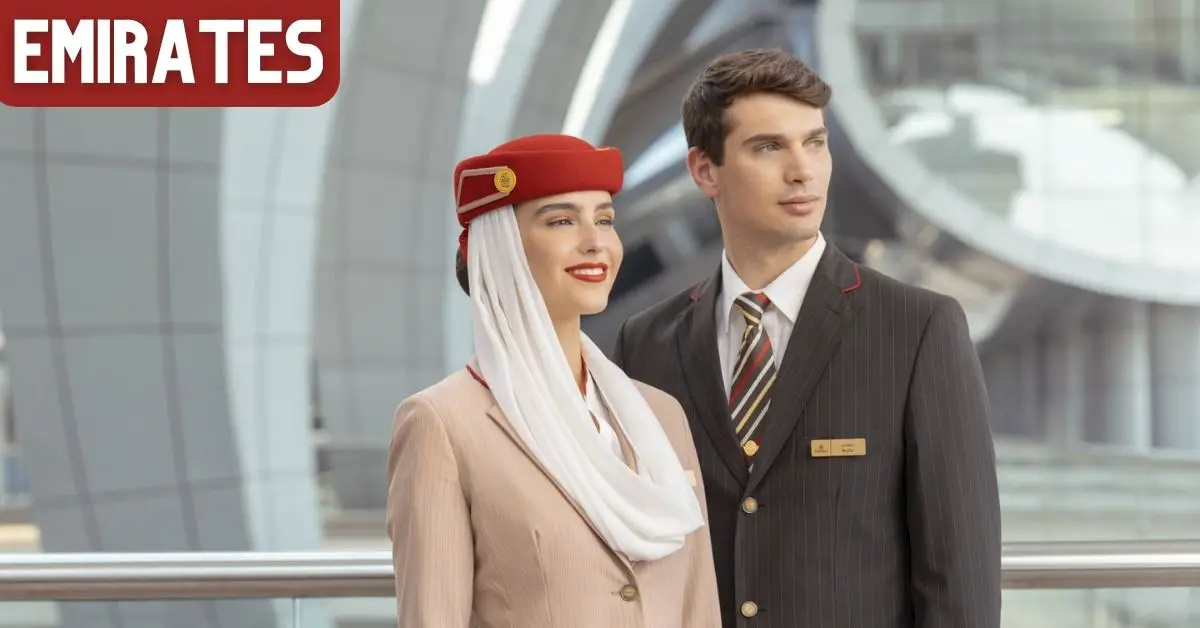
Emirates is renowned for its luxurious in-flight experience, and its flight attendant uniforms reflect this high standard.
The iconic beige suit, complemented by a red hat and white scarf, exudes elegance and sophistication. The uniform’s design is both practical and stylish, featuring breathable fabrics suitable for long flights.
The red hat and scarf add a touch of traditional Middle Eastern fashion, aligning with the airline’s cultural roots and brand identity.
Also Read: How to become an Emirates Cabin Crew?
Singapore Airlines
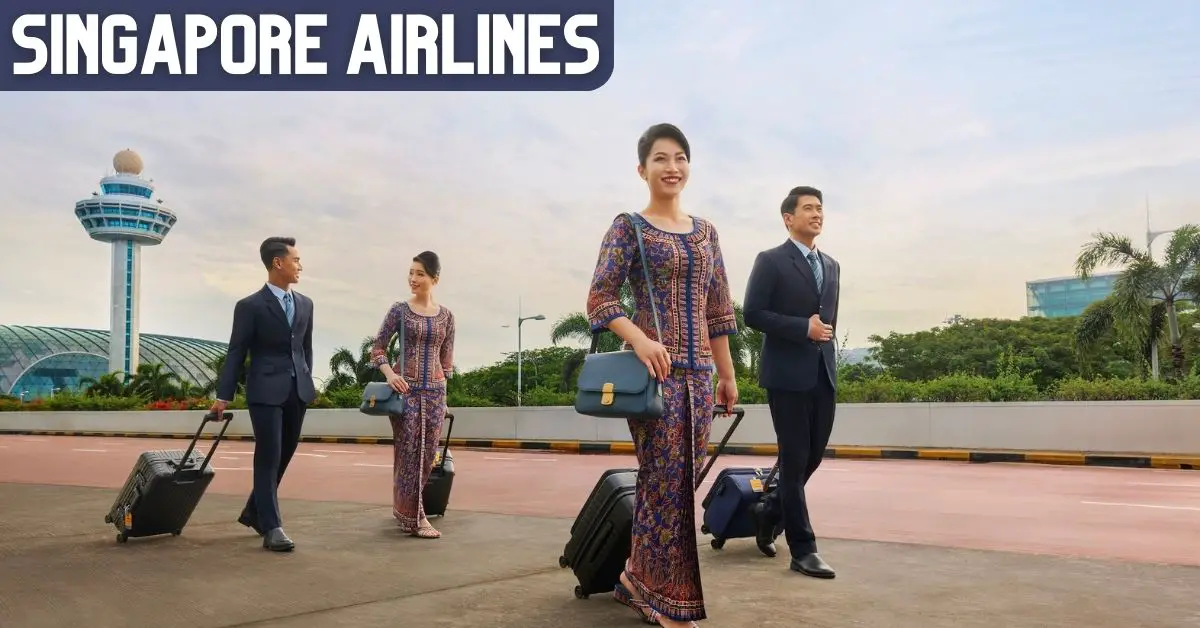
Singapore Airlines flight attendant uniforms are a perfect blend of tradition and modernity. The sarong kebaya, designed by French fashion designer Pierre Balmain, incorporates traditional Southeast Asian attire with contemporary elegance.
The intricate patterns and vibrant colors not only make the uniform visually stunning but also pay homage to the rich cultural heritage of Singapore. Feedback from flight attendants highlights the comfort and practicality of the fabric, which is essential for long-haul flights.
Also Read: How to become Singapore Airlines Cabin Crew?
Qantas
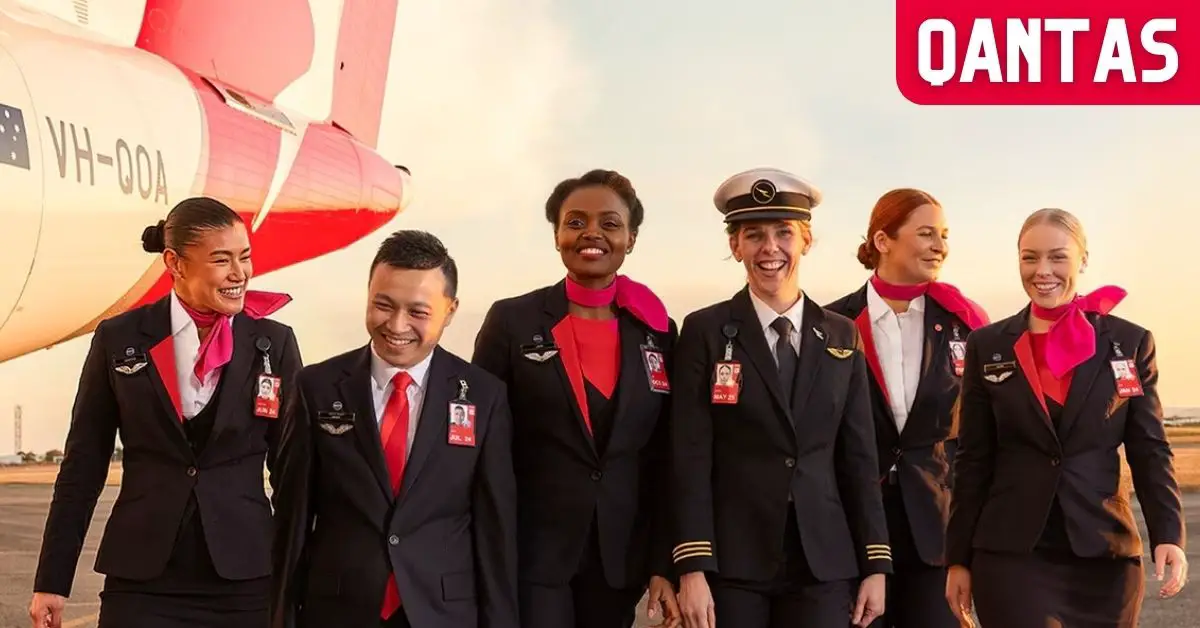
Qantas recently revamped its flight attendant uniforms, focusing on modernity and sustainability. The new uniforms feature a sleek design with bold colors that represent the Australian landscape.
Sustainable materials are used in the fabric, reflecting Qantas’ commitment to environmental responsibility. The uniforms are designed for comfort and practicality, with functional pockets and easy-to-move-in cuts, ensuring that flight attendants can perform their duties with ease.
Also Read: Steps to Become a Qantas Cabin Crew
Air France

Air France is synonymous with elegance, and this is clearly reflected in its flight attendant uniforms. The uniforms are designed by top French designers and showcase the sophistication and style that French fashion is known for.
The sleek lines, classic colors, and high-quality fabrics create a polished and professional look. These uniforms not only enhance the airline’s luxurious image but also ensure that flight attendants feel comfortable and confident throughout their service.
Also Read: Explore Guide to Become Air France Flight Attendant
Virgin Atlantic
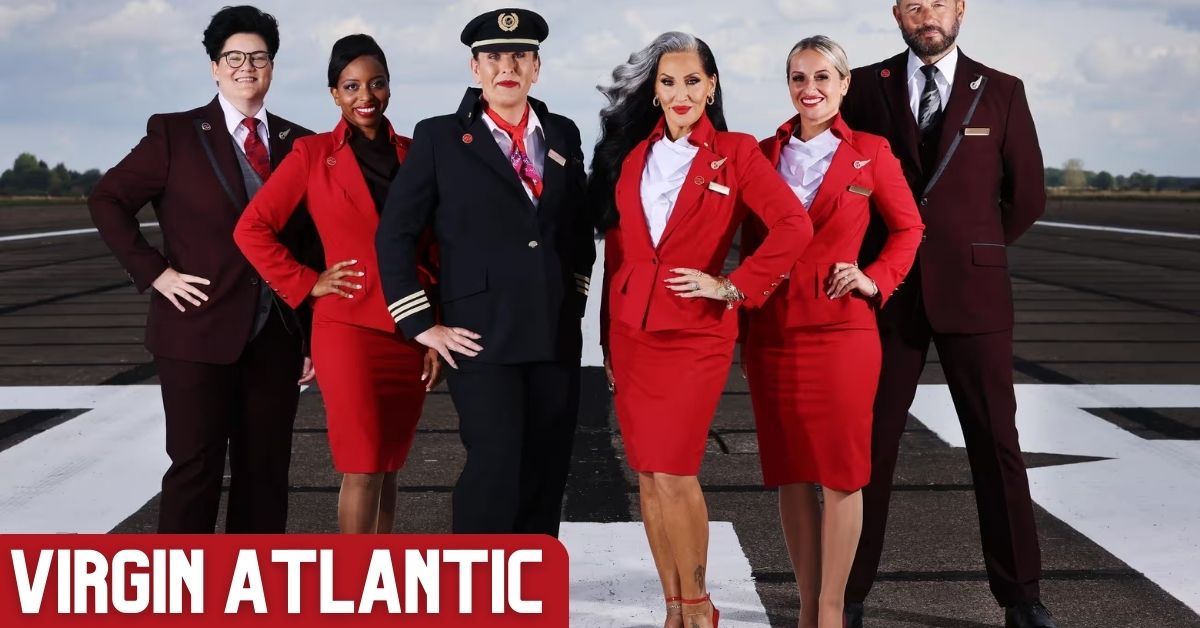
Virgin Atlantic’s uniforms are bold, modern, and instantly recognizable. Designed by Vivienne Westwood, the uniforms feature a striking red color and contemporary design elements that set them apart from traditional airline attire.
The materials used are both eco-friendly and comfortable, aligning with Virgin Atlantic’s innovative and sustainable brand values. Unique features, such as the tailored fit and stylish accessories, make these uniforms a favorite among flight attendants and passengers alike.
Also Read: Can Flight Attendant have tattoos?
These airlines have successfully created flight attendant uniforms that not only look great but also meet the practical needs of their crew.
By combining style, comfort, and brand identity, they have set the standard for excellence in airline uniforms. In the next section, we’ll explore innovative and sustainable uniforms that are leading the way in modern aviation.
Innovative and Sustainable Uniforms
Japan Airlines

Japan Airlines (JAL) is at the forefront of innovation and sustainability in flight attendant uniforms. The airline has introduced uniforms made from eco-friendly materials, including recycled polyester, which reduces environmental impact.
These materials are not only sustainable but also lightweight and breathable, ensuring comfort for flight attendants during long-haul flights. JAL’s uniform design incorporates traditional Japanese elements, such as the obi-inspired belts, blending cultural heritage with modern fashion.
Also Read: How to Become a Japan Airlines Cabin Crew?
The practicality of the uniforms is enhanced by thoughtful features like ample pockets and easy-care fabrics, making them both functional and stylish.
Alaska Airlines
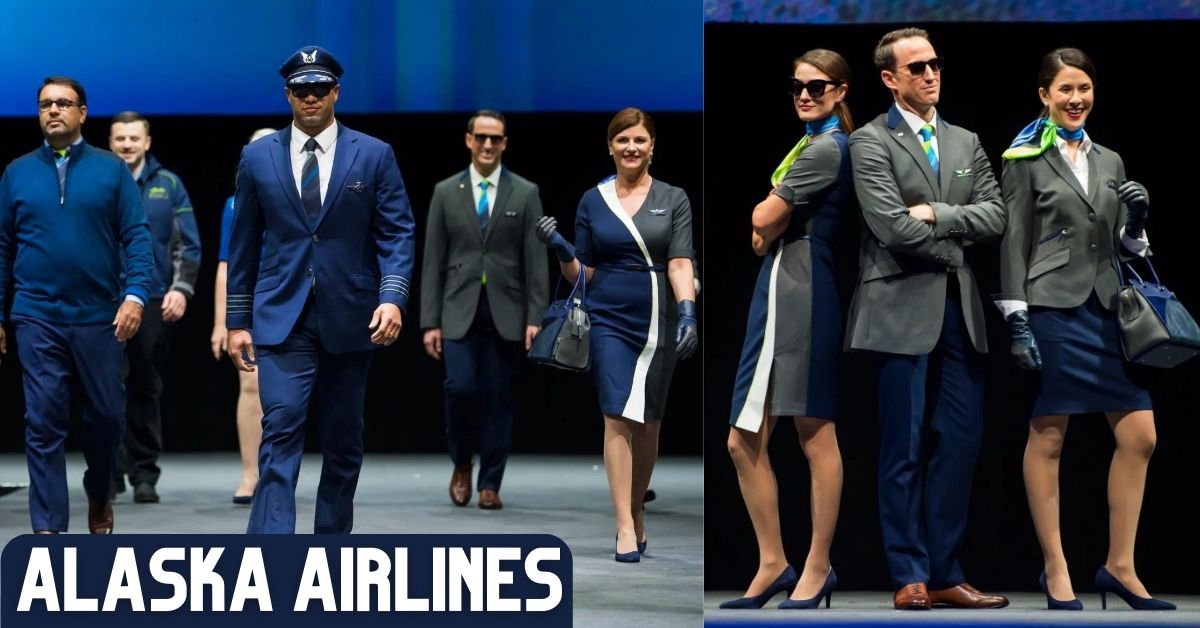
Alaska Airlines has made significant strides in sustainability with its recent uniform updates. Collaborating with fashion designer Luly Yang, the airline has created uniforms that prioritize both environmental responsibility and employee comfort.
The new uniforms use fabrics made from recycled materials, aligning with Alaska Airlines’ commitment to reducing its carbon footprint. In addition to being eco-friendly, the uniforms are designed with the input of flight attendants to ensure they meet the practical needs of the job.
Also Read: How to become Alaska Airlines Flight Attendant?
Features like moisture-wicking properties, stretchable fabrics, and ergonomic designs help flight attendants stay comfortable and perform efficiently throughout their shifts.
Delta Air Lines

Delta Air Lines has also embraced innovation and sustainability in its uniform design. Partnering with designer Zac Posen, Delta introduced uniforms that incorporate sustainable materials and advanced textile technologies.
The uniforms feature high-performance fabrics that are durable, easy to care for, and comfortable for long wear. Delta’s commitment to sustainability is evident in its use of recycled polyester and eco-friendly dyes, reducing the environmental impact of its uniforms.
The design also emphasizes inclusivity, with a wide range of sizes and styles that cater to the diverse body types of their staff.
These innovative and sustainable approaches to flight attendant uniforms not only enhance the comfort and efficiency of the crew but also reflect a growing trend in the aviation industry towards environmental responsibility.
Also Read: How to become a Delta Air Lines Flight Attendant?
Airlines like Japan Airlines, Alaska Airlines, and Delta Air Lines are leading the way by setting new standards for eco-friendly and practical uniform designs. In the following section, we will take a look at the historical evolution of flight attendant uniforms and how fashion trends have influenced their design over the decades.
Historical Perspectives
Evolution of Flight Attendant Uniforms
The history of flight attendant uniforms is a fascinating journey through time, reflecting changes in fashion, cultural shifts, and advancements in the aviation industry.
In the early days of commercial aviation, uniforms were designed to project a sense of professionalism and authority.
The 1930s and 1940s saw flight attendants, often referred to as “stewardesses,” wearing tailored suits and caps, mirroring the military-inspired styles of the era.
The 1960s and 1970s brought a dramatic shift in uniform design, influenced by the cultural revolution and the rise of commercial air travel.
Airlines like Braniff International Airways collaborated with high-fashion designers such as Emilio Pucci, introducing vibrant colors, bold patterns, and avant-garde styles.
This era emphasized glamour and sophistication, turning flight attendants into fashion icons.
As the 1980s and 1990s approached, the focus shifted towards practicality and comfort.
Uniforms became more understated and functional, incorporating fabrics that allowed for greater movement and comfort. This period also marked the beginning of gender-neutral designs, reflecting broader social changes.
Iconic Uniforms from the Past
Several flight attendant uniforms from the past have left a lasting impression and are remembered as iconic pieces of aviation history:
Pan American World Airways (Pan Am): The Pan Am uniform from the 1960s, with its sharp blue suits and white gloves, epitomized the golden age of air travel. It represented elegance and professionalism, making Pan Am flight attendants some of the most recognized in the world.
Braniff International Airways: Braniff’s uniforms in the 1960s and 1970s, designed by Emilio Pucci, were revolutionary. The use of psychedelic colors and unconventional designs, such as space-age helmets and interchangeable wardrobe pieces, captured the spirit of the era and set a new standard for airline fashion.
TWA (Trans World Airlines): TWA’s uniforms in the 1970s, created by designer Stan Herman, were known for their chic and modern look. The use of bright colors and sleek lines made TWA flight attendants stand out and become fashion trendsetters.
These iconic uniforms not only defined the airlines’ brand identities but also mirrored the cultural and fashion trends of their times. They contributed to the allure of air travel, making it a glamorous and aspirational experience.
The evolution of flight attendant uniforms showcases the dynamic interplay between fashion, culture, and the practical needs of the airline industry. By examining these historical perspectives, we gain a deeper appreciation for the thought and creativity that go into designing these essential garments.
In the next section, we will hear directly from flight attendants and designers about their experiences and perspectives on uniform design.
Interviews and Opinions
Flight Attendant Testimonials
To gain a deeper understanding of what makes a great flight attendant uniform, we spoke with several flight attendants from different airlines. Their insights provide a firsthand perspective on the practical aspects and personal preferences that influence uniform design.
Sarah, Emirates Airlines:
“Emirates’ uniform is incredibly stylish and makes us feel proud to represent the brand. The hat and scarf are iconic, but the practicality is what I appreciate most.
The fabric is breathable, which is essential on long flights, and the pockets are well-placed, allowing us to carry necessary items easily.”
James, Delta Air Lines:
“Delta’s new uniforms are a significant improvement in terms of comfort and functionality. The stretchable fabric and moisture-wicking properties are lifesavers during busy flights. It’s also great to see the airline’s commitment to sustainability reflected in the materials used.”
Lily, Virgin Atlantic:
“Working in Virgin Atlantic’s uniform designed by Vivienne Westwood is a unique experience. It’s bold, modern, and stands out, which makes us feel special.
The fit is tailored yet comfortable, allowing us to move freely. Plus, the eco-friendly materials align with the airline’s values, which is important to me.”
Designer Interviews
Designers who create flight attendant uniforms bring a unique blend of fashion expertise and practical considerations to their work.
We spoke with a few designers who have worked on notable airline uniforms to get their insights.
Vivienne Westwood, Designer for Virgin Atlantic:
“Designing for Virgin Atlantic was about capturing the airline’s bold, innovative spirit.
We wanted to create something striking and memorable while ensuring the comfort and practicality needed for long-haul flights.
The use of sustainable materials was a key focus, aligning with both my and Virgin’s commitment to the environment.”
Luly Yang, Designer for Alaska Airlines:
“Collaborating with Alaska Airlines involved extensive feedback from flight attendants. Their input was crucial in creating a uniform that not only looks good but also meets the daily demands of their job.
We incorporated features like adjustable fits and moisture-wicking fabrics to enhance comfort and functionality.”
Pierre Balmain, Designer for Singapore Airlines (historical perspective):
“The sarong kebaya for Singapore Airlines was inspired by traditional Southeast Asian attire. It was essential to honor the cultural heritage while creating something elegant and timeless.
The intricate patterns and vibrant colors were chosen to reflect Singapore’s rich cultural tapestry.”
These testimonials and interviews highlight the collaborative effort between designers and flight attendants in creating uniforms that are both stylish and practical.
The focus on comfort, functionality, and sustainability is evident in the feedback from those who wear these uniforms daily.
Conclusion
Flight attendant uniforms are a blend of fashion and function, reflecting an airline’s identity while ensuring comfort for the crew.
They balance style, practicality, and brand representation, with airlines like Emirates and Virgin Atlantic setting high standards.
Modern designs are increasingly sustainable, with Japan Airlines and Alaska Airlines leading in eco-friendly practices. Historical uniforms from Pan Am and Braniff continue to inspire contemporary designs.


